In 2016 my life revolved around beer and films. I was in my twenties, pulling pints in a renowned Birmingham alehouse. On my nights off I ran a short film night called The Magic Cinema.
I screened all sorts of weird and wonderful work on those nights but there was one film I could only dream of showing. Strange to say it now, but my mind would often wander to a leafy suburb in Oxford where there lived a man who was then a few years short of his 90th birthday. Desmond Morris was the only living person who knew the whereabouts of a now 75-year-old reel of celluloid that I’d been hunting down for years.
Morris was a 22-year-old zoology student at the University of Birmingham, when he made the experimental, surrealist short film Time Flower in the summer of 1950. The 1950s was a vintage decade for film but marked the tail end of surrealism’s influence. Jean-Pierre Melville directed Jean Cocteau’s script for Les Enfants Terribles (1952), kicking off New Wave cinema, while the European founders of the surrealist movement – André Breton, Max Ernst, Leonara Carrington – began to reach middle age.
Time Flower’s fresh dream-logic and absurdity nonetheless startled its audiences, and even bagged a couple of awards. And then, after a handful of screenings, it vanished. Morris went on in 1956 to become the debut presenter of Granada Television’s animal education show, Zoo Time, and he was a household name by the time he wrote a bestseller, The Naked Ape, in 1967, examining humans as a zoologist might examine any animal species. Though he continued a double life as a surrealist painter, his youthful ventures into surrealist filmmaking were all but forgotten.
“Lost films” are surprisingly common in the history of cinema. Many original celluloid prints have been lost to fire, including the famous Vault 7 inferno in 1965 at MGM’s storage facility in Culver City, California. But what I didn’t realise was how much I would learn about a lost Birmingham, too, through my search for an obscure, short piece of film that until a few months ago, I hadn’t even seen.
Into the surreal
My introduction to Birmingham Surrealism came via an event at the city’s annual Flatpack Festival of film in 2013. At this time I was working a zero-hours job in a multiplex, trying to stay motivated with my own filmmaking practice. I had studied film at university and felt most inspired on the rare occasions we were shown experimental cinema. This was like having the curtain lifted and glimpsing new realms of artistic possibility. Flatpack Festival, with their adventurous programming, had a similar effect on me and helped keep that flame of inspiration alive. Something else they were good at was introducing me to obscure strands of Birmingham’s counter-cultural history, revealing new dimensions to a city I had grown up assuming to be a pretty dull place.
I went along to see Surreal Enigmas (dir. Silvano Levy, 1995), a documentary about Birmingham-based painter and agitator, Conroy Maddox. I was astonished to learn that between the 1930s and 1950s, Birmingham had fostered a lively surrealist scene with close ties to the Paris nerve centre. Much of the action centred around Maddox’s ‘surrealist villa’ in bohemian Balsall Heath, an 11-room house on Speedwell Road where he hosted riotous gatherings of outsiders, misfits and radicals. The group once staged a mock crucifixion of the naked Maddox while a nun drank a two-pint bottle of the local brew, Mitchells & Butlers. Another story that stayed with me was that of a young surrealist, new to the city in the 1940s, who surreptitiously deposited an elephant skull in a shop doorway on New Street, in the city centre, causing the local press to report that a “dinosaur” had come to town. That young surrealist was Desmond Morris.
I’ve always loved surrealism. Its sense of mischief, its audacity, its wild attempts to subvert society using the power of dreams and the unconscious. It all stirs in me a giddy joy, and finding out my home city was part of this history was thrilling. If Birmingham could have surrealists, then anything was possible. I picked up a second-hand copy of Surrealism in Birmingham edited by Tessa Sidey and read all about Maddox, Morris, the Melville brothers, Emmy Bridgwater, the Trocadero and the now defunct Kardomah Café, where the group often gathered.
Among the essays, recollections, poems and manifestos, I also found a timeline of Morris’s involvement with the group. One line jumped out: “1950 – [Morris] writes the scenarios for two surrealist films Time Flower and The Butterfly and the Pin, filmed by Christopher Simpson, the former given an award by the Institute of Amateur Cinematographers.”
This was dizzying stuff. A Birmingham surrealist had made films. Where were these films now? What strange realms were contained within them? I couldn’t find anything on YouTube or Vimeo, nor in UbuWeb’s vast online library of avant -garde film.
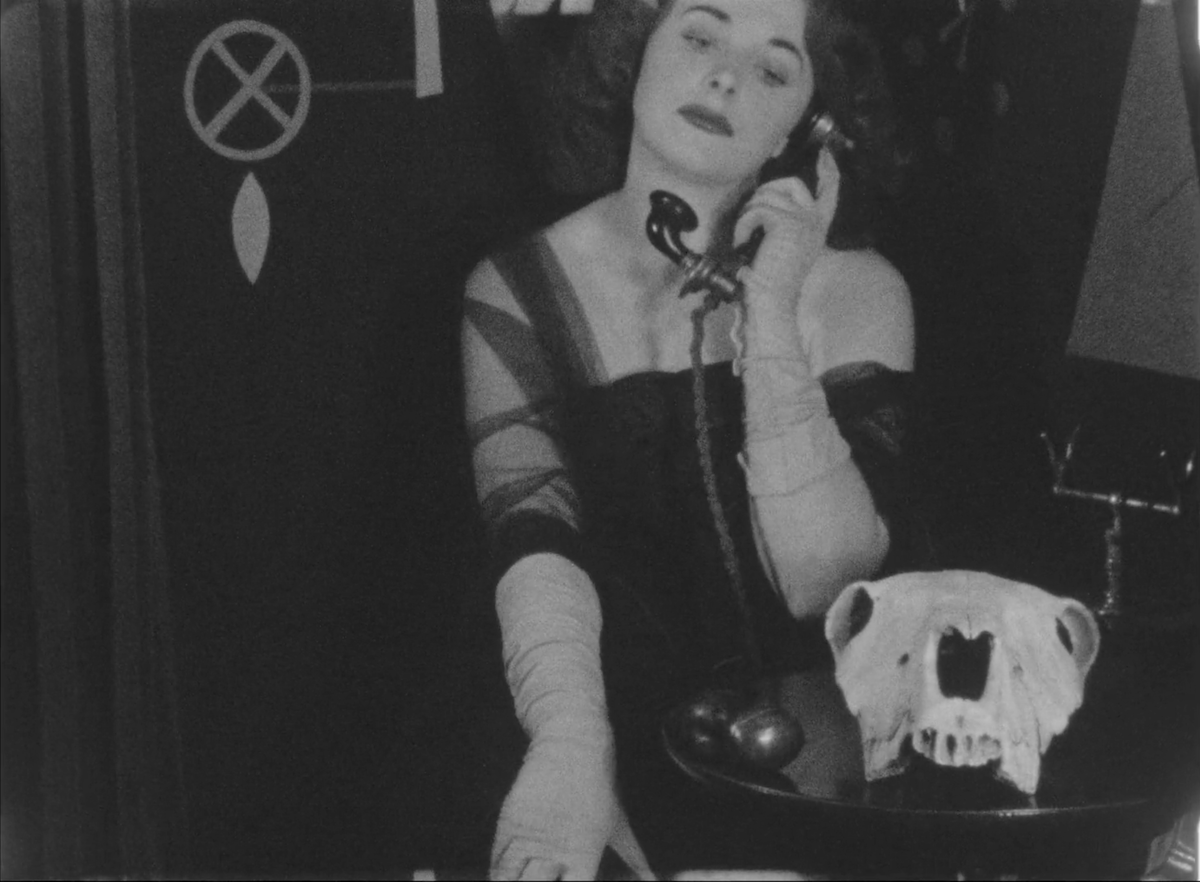
I got in touch with Stephen Forcer, then Professor of French at the University of Birmingham, and Roger Shannon, then Professor of Film at Edge Hill University, who had together delivered the Surreal Enigmas screening at Flatpack in 2013. They told me that Morris himself had the only known copies but that he refuses all requests for public screenings. My chances of ever seeing the films seemed slim, but at least their existence was confirmed.
As an extra titbit, Forcer told me that the shooting scripts had been published in Silvano Levy’s Desmond Morris: 50 Years of Surrealism. Even if I couldn’t see the films in celluloid form, at least with the scripts I’d be able to see the images in my head. I checked online and found a copy selling for the very reasonable price of 85p.
The book arrived and I turned to the contents page: “Film scenarios by Desmond Morris, page 196”. I jumped to the appendices to discover… nothing. It was an ex-library book and the pages were missing. No wonder it had been so cheap. I emailed Levy, an academic expert on surrealism, to ask if he could supply the missing pages in digital form but alas, it had been so long he couldn’t recall their original source or format. He suggested contacting Morris directly through his website. “He may even invite you [to meet] and you could discuss the importance of the films,” Levy wrote, “which he is thinking of destroying.”
I didn’t contact Morris. Not then anyway. What could I say to change his mind? Besides he was pushing 90 by this point, and doubtless the last thing he needed was to be bothered about some ancient student films he seemed intent on forgetting. It was surely just a matter of time before they were lost for good. My quest to find the mythical Birmingham surrealist films was over. Or so I thought.
A zoologist in Brum
Morris’s time in Birmingham was brief but formative. Having acquired his twin passions of zoology and art growing up in Wiltshire, he enrolled at the University of Birmingham in 1948 after two years of army service. In true surrealist style, his move was determined largely by chance – Birmingham being the only university that could take him at short notice following his demobilisation.
The city would provide Morris with two charismatic mentor figures, one being his zoology professor and future Nobel Prize winner, Peter Medawar, and the other being surrealist ringleader, Conroy Maddox.
Medawar’s research laid the groundwork for organ transplants, earning him the epithet “the father of transplantation”. Morris remembers him as a witty and inspirational teacher who encouraged him to consider zoology seriously as a profession. Maddox, on the other hand, fostered Morris’s rebellious creative side and inspired him to pursue his surrealism and extend it beyond painting.
“It was very exciting because not only did I have wonderful zoology but I also had wonderful surrealism, in Birmingham, and it gave me three of the happiest years of my life,” Morris recalls.
It was also during this period that Morris, emboldened by his acceptance into Maddox’s circle and inspired by a viewing of Luis Buñuel and Salvador Dali’s seminal 1929 film Un Chien Andalou, decided to have a go at filmmaking himself.
He wrote the scenario for Time Flower and shot it on 16mm film while at home in Swindon for the summer. The cameraman was a young filmmaker called Christopher Simpson, of the Swindon Film Unit. The film starred Morris himself, his then-fiancée Ramona Baulch and their friend Paul Weir. It was awarded ‘most outstanding film’ at the Institute of Amateur Cinematographers’ annual awards in 1951 and promptly slipped into obscurity. A second film, The Butterfly and the Pin, was made with the same team but it too was forgotten, until both scripts were published decades later.
I did eventually get hold of the scripts when another version of 50 Years of Surrealism came on the market. Finally getting to read these scenarios and see the pictures in my head was intoxicating. Time Flower entranced and unsettled me with its story of a man’s frustrated pursuit of a woman through the countryside, interrupted by a series of bizarre visions.
We're sorry to interrupt but if you're enjoying this story, why not sign up to our Dispatch mailing list? Get two editions per week on our free lists or — better yet — join our paid supporters and get all four weekly editions and access to our exclusive members' events for just £1 a month, for the first three months.
It was time to renew my own quest. I simply had to see how these images had been captured on celluloid. My previous efforts had stalled, but there was one thing I hadn’t tried yet: performance art. In 2016 I enrolled onto an artist development programme and devised a cinematic séance to invoke the spirit of the lost film. Using resonant objects found in junk shops, and a flickering device called a Dreamachine, I gave a dramatic recitation of the memorised Time Flower script, as though receiving it from the other side.
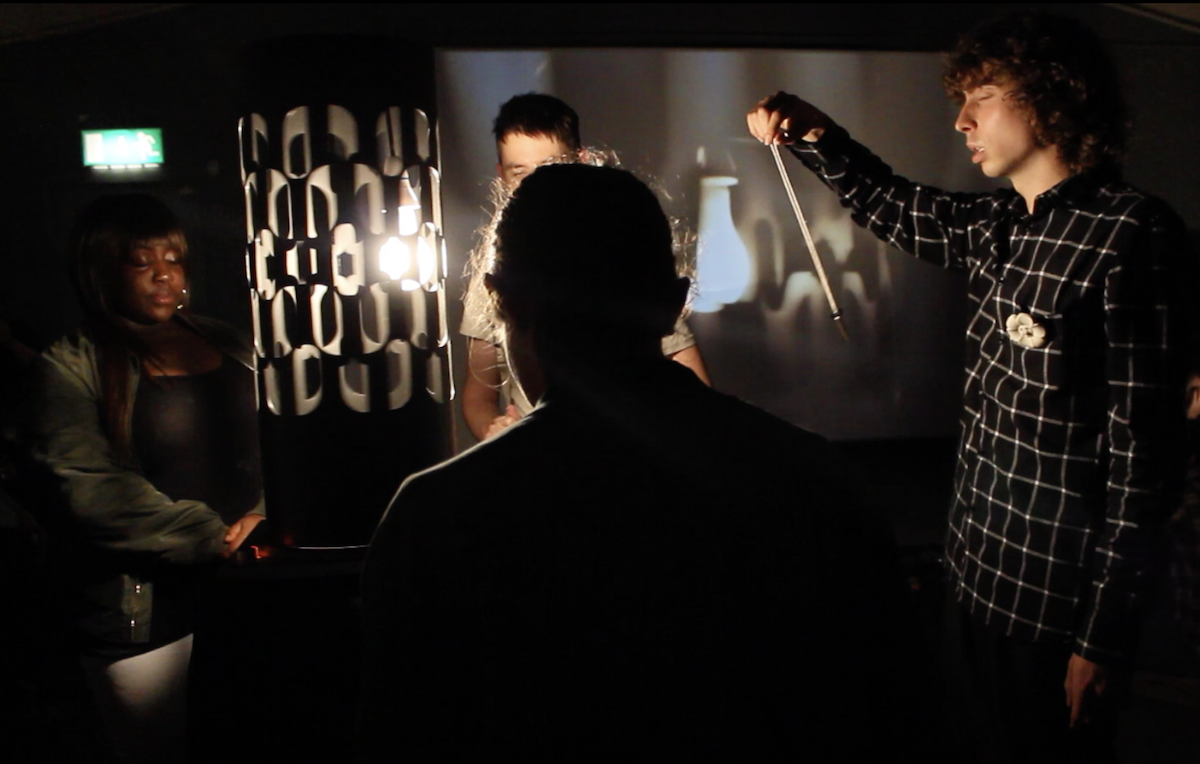
It was a success. Parts of the performance were captured and I resolved to send the videos to Morris and tell him what I’d done. I tentatively sent an enquiry, not at all sure how he’d respond to my unauthorised resurrection of his work. Morris had moved to Ireland following the death of his wife Ramona in 2017. He wanted to be closer to his family and I’d heard he was writing and painting prolifically. Fortunately he was receptive, so I sent him the videos and received the following reply:
I was amazed to hear my 70-year-old words being given such a dramatic revival. Have you seen the original film all through? […] After keeping it under wraps for 70 years I am finally prepared to let it be seen. I have it on a DVD disc and I will see what I can do to have it placed on my website. I will let you know when that has been done.
I was stunned. All it took was a séance. The passing of time had also played its part — the film’s antique status finally allowed Morris to overlook its technical limitations and enjoy its “surrealist intensity”. The Butterfly and the Pin, however, he still regarded as an unmitigated disaster and would rather it survive only in script form. Still, one out of the two wasn’t bad.
Inevitably, there was a glitch. The DVD version turned out to be corrupted and the only other copy was the original 16mm print buried somewhere deep in Morris’s personal archive. It wasn’t until April 2024 that I received the following:
I have at last managed to get TIME FLOWER put onto a memory stick. I imagine that it is now too late to interest you, but I could post the stick to you. […] The post from Ireland (post-Brexit) is unreliable, so please let me know when you get the memory stick.
I awaited the package with bated breath. Finally it arrived and with my palms sweating, I started up my laptop, plugged in the memory stick, opened up the file and noticed with surprise that it was half an hour long. I was expecting no more than 10 minutes. I hesitantly pressed play and up came the black-and-white static of a VHS transfer. When the static cleared I was inexplicably treated to 15 minutes of unedited rushes for a Jonathan Meades interview apparently shot in the 1990s.
Much to my relief, Time Flower played next. A grainy, lo-res copy which nonetheless still demonstrated the potency of the work. Finally I saw those flickering images I had committed to memory all those years ago. The bleeding clock face. The plums in the eye sockets of a skull. The bird and the exploding violin. I sent it to Flatpack Festival; in turn they sent me to Ireland to collect the original 16mm for a 75th anniversary screening — including a filmed interview with Morris —, scheduled for 10 May of this year.
I arrive at Desmond Morris’ house with Ian Francis, Flatpack Festival’s director. It’s a far brighter day than the previous one we spent on the ferry from Holyhead. Desmond greets us warmly; it’s immediately clear that he’s lost none of the youthful enthusiasm that drove him to make Time Flower three quarters of a century ago. He excitedly shows us around his collection of artworks, sculptures and books, reminiscing about his friendships with David Attenborough, Stanley Kubrick and his adolescent romance with fellow Swindonian and future Hollywood star, Diana Dors.
Mercifully, the ancient piece of celluloid containing Time Flower turned out ok. A bit worse-for-wear, unsurprisingly, but in decent enough condition to produce a new 4K transfer.
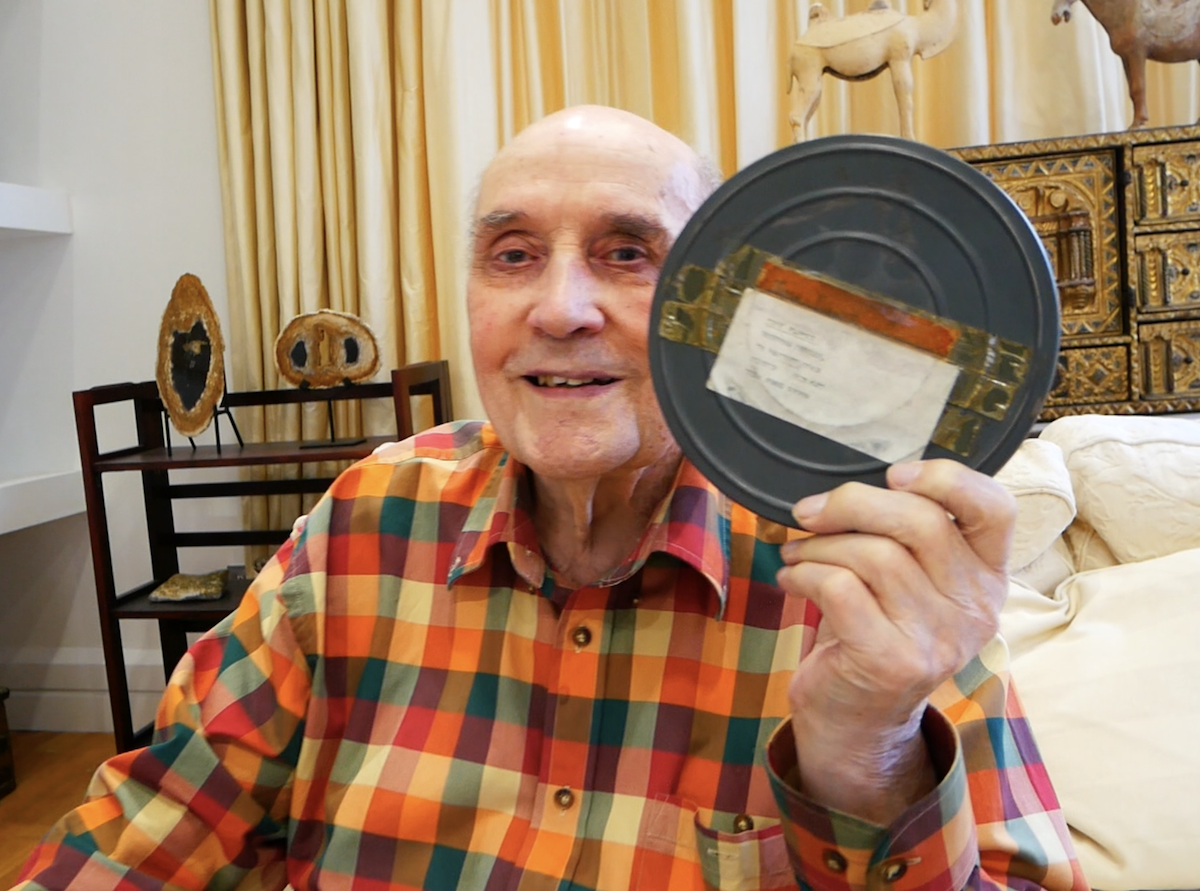
Reflecting on what has kept him so active all these years, he shares his theory on longevity: “Curiosity keeps you alive. Having an intense curiosity and the urge to be creative, to create something, to paint something, to write something […] and it’s very important to have that urge to ask questions, to keep a childlike curiosity no matter how old you are. That’s what certainly kept me going.”
Time Flower is being screened at Flatpack Festival on 10 May. Find out more here.
Have you ever seen a 'lost film', or have any tales of disappeared Birmingham culture? Let us know in the comments.


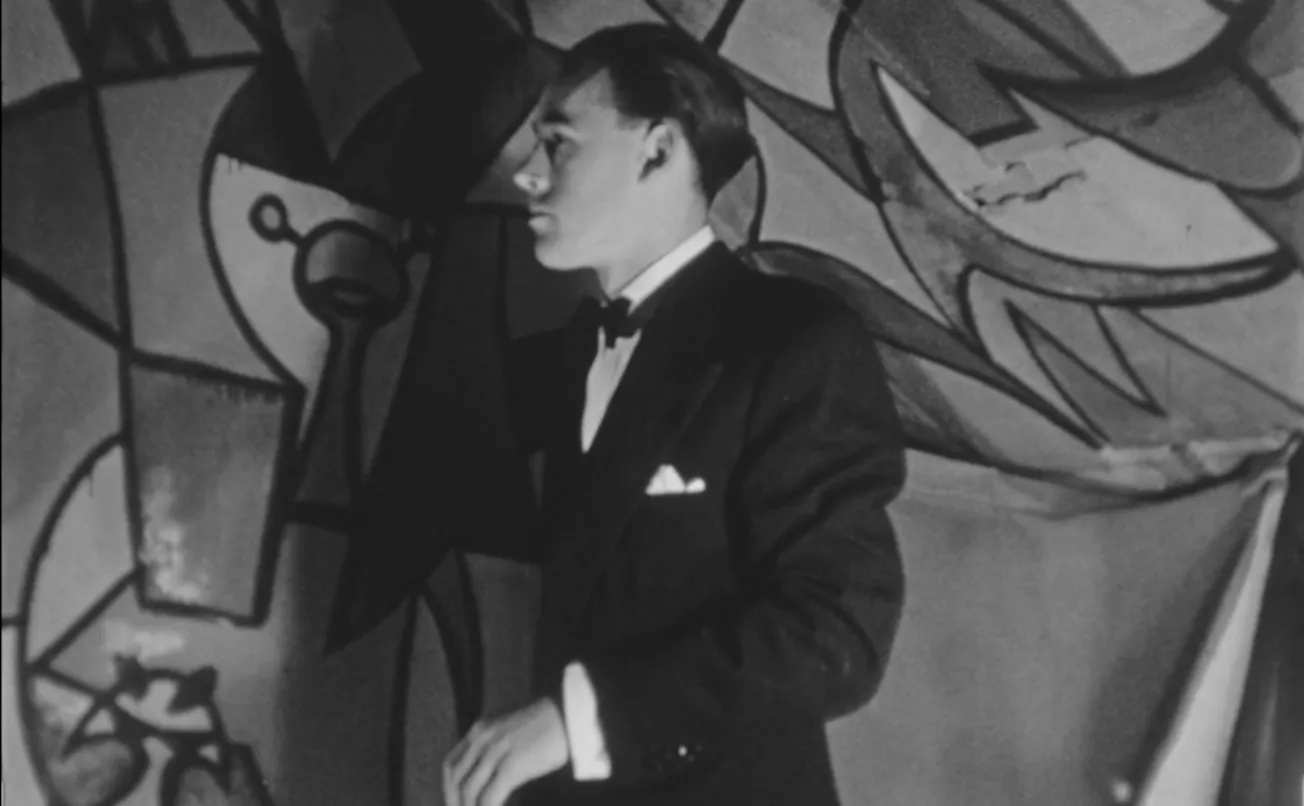


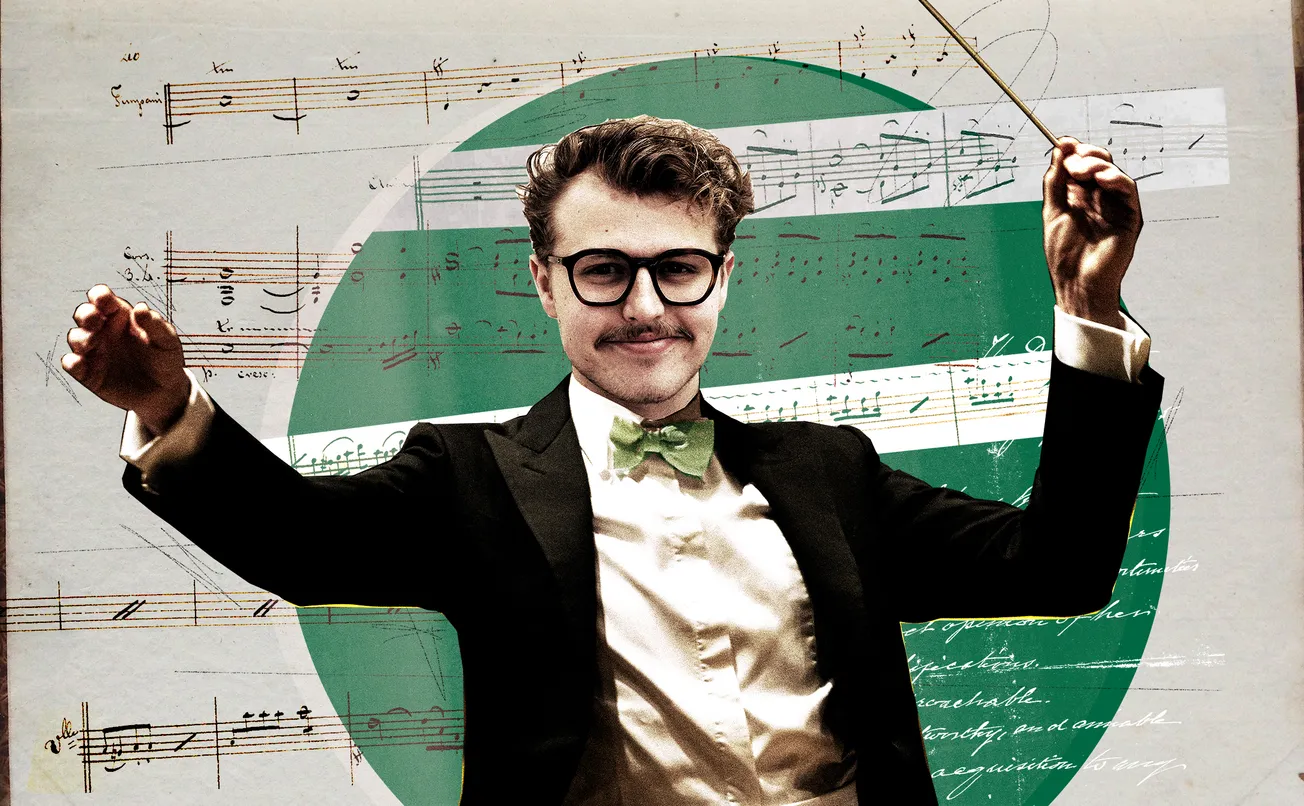


Comments